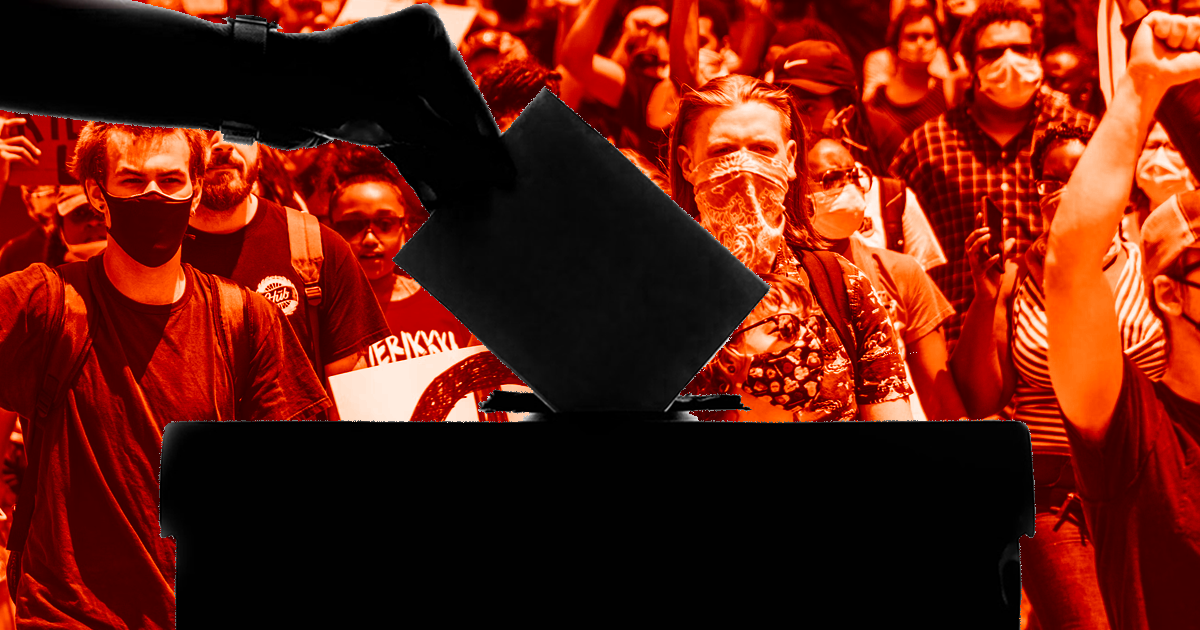
79% Think American Democracy is Endangered or Broken
August 29, 2024,
A poll from AP-NORC recently revealed that 79% of Americans believe democracy is at risk in the upcoming election or already too far gone. Although the parties certainly blame each other for ending democracy, the sentiment itself is not a partisan issue. Members of both parties believe that democracy is threatened or broken at similar frequencies (76% for Republicans, 80% for Democrats). The opinion of independents is even more notable. While 17% of Republicans and 12% of Democrats think our system is entirely broken, a whopping 37% of independents take that view.
These are not healthy numbers and suggest at least one serious flaw in our system beyond partisanship. No matter who wins the election in November, restoring American faith in democracy should be a top priority for any administration. The most effective way to reassure Americans that their vote actually matters would be to reform how their vote is counted by instituting proportional representation and replacing the Electoral College with the popular vote.
The MIT Election Lab says that “Voter turnout is a measure of civic participation that many people believe best gauges the health of the electoral process.” The average turnout for countries with proportional representation (since 2000) has been significantly higher than those without, even excluding countries with mandatory voting (Belgium, Luxembourg, Australia). Although there could be confounding variables that increase turnout in those countries besides proportional representation, it seems like voters in proportional representation systems have more faith in the power of their vote.
Polling conducted by FiveThirtyEight and Ipsos found that for “voters who rarely or never vote” (hereafter referred to as nonvoters), there is a clear disconnect between their own beliefs and the platforms of the both parties. 25% don’t like any of the candidates, 15% believe they are all the same, and about 11% feel like the candidates do not talk about issues that are important to them. This could help explain why independents don’t feel like the system works; they feel like no candidates represent them. Proportional representation means that voters whose preferred candidate cannot win in their district can still be accounted for in Congress. It would allow nonvoters who feel like no candidate represents them to influence the platforms of both parties. That cadre of disenfranchised nonvoters could be the greatest difference between the two systems in turnout.
Replacing the Electoral College with a national popular vote would increase turnout as well. Evidence suggests that voters in safe states during presidential elections vote less often. According to the MIT Election Lab, the average turnout in battleground states (<5% margin of victory) was 11% higher than turnout in safe states (>30% margin of victory) in 2020. After all, why should a voter of the minority party even bother taking the time out of their day to vote in a state where the margin of victory is so large?
FiveThirtyEight’s polling backs this up, stating that about 12% of nonvoters believed that their vote didn’t matter because of where they lived. This would be solved by both proportional representation and the popular vote. By ending the current winner-takes-all system, proportional representation would prevent the disenfranchisement of voters through gerrymandering, a policy loophole which is condemned by voters on both sides of the aisle. Similarly, the popular vote would mean that a Democrat in Kansas or a Republican in New York matters just as much as any other voter, even if their party can’t win the state.
Common sense reforms like proportional representation and the popular vote can easily restore American faith in their institutions. If you believe in proportional representation or the end of the Electoral College, you can sign our petition here.